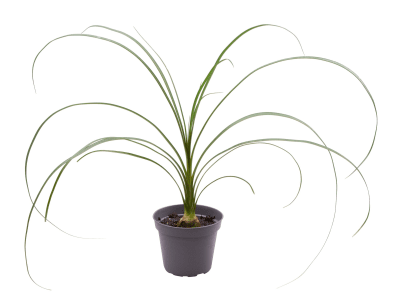
Beaucarnea Recurvata (Nolina)
F00000893
Origin
Coffea arabica, better known as Arabian coffee, originally hails from the highlands of Ethiopia. It later spread to Yemen and from there to the rest of the world. It is now one of the most widespread and cultivated coffee species in the world, accounting for nearly 60% of global coffee production.
Characteristics
Coffea arabica is an evergreen shrub or small tree that can grow up to 5 metres in height, although it’s usually kept at 2 to 3 metres for easy harvesting. It boasts dark green, glossy leaves and white, strongly scented flowers. The fruit undergoes a two-year cycle, from blooming to the eventual coffee cherry, which turns red when ripe and typically contains two seeds, or 'beans'.
Care/
The Coffea arabica prefers a rich, well-draining soil and ample light, but no direct sunlight. It requires a stable temperature between 15 and 24 degrees Celsius, and doesn’t fare well in areas where the temperature frequently falls below 13 degrees. It also needs plenty of water, with regular and balanced fertilising. Finally, the plants are pruned to encourage compact, bushy growth and to focus energy on fruit production.
| Phone NL | +31 885 014 000 |
|---|---|
| Phone NGC | +31 885 014 014 |
| Phone FR | +33 (0)130 760 344 |